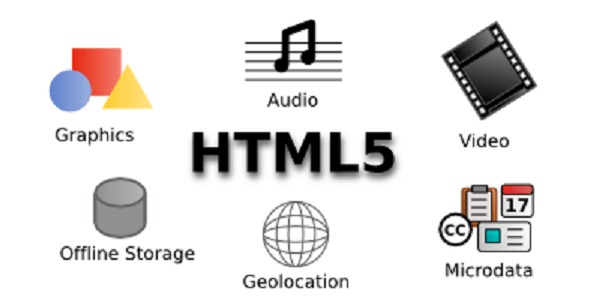HTML5 is one of the top choices of programming languages for websites. It’s easy to learn, as it is taught in Intro courses through training schools like the Austin Coding Academy. If you haven’t been using HTML5 in your website design, it’s time to start.
It’s so popular that it’s even replacing Adobe Flash. Business Insider explains that “Google plans to formally make HTML5 Chrome’s default for all users” within a year.
So, why is it so popular?
Here are some advantages of using the newest version of HTML in web and app design:
It is consistent – No matter which browser or platform you use, you can expect HTML5 to appear the same as it appears across ALL browsers and platforms. Web design in today’s world is all about responsiveness and user-friendliness. One way to achieve a responsive design is to make sure that a web page runs smoothly on all devices and can be viewed in all browsers.
Simplified and coding – As mentioned above, this language is easy to learn and implement. There are no long blocks of complicating coding, since smaller chunks can create the same thing. It’s a breeze to place video and audio content with HTML5, as it treats such content the same way it treats image tags. Coders can include various multimedia elements without the need for plugins or API.
Offline application cache – It can be very annoying whenever the internet connection goes out and webpages won’t load since it wasn’t cached properly. This doesn’t have to happen with HTML5. During the building phase, the developer can specify which files that the browser should cache. This makes it easy to create a page that CAN be refreshed, even when there is no internet connection.
Client side storage – In the past, it was difficult for developers to store data in the user’s browser that would remain even after the session was closed. They had to depend on built-server-side infrastructure and cookies. With HTML5, data can be stored locally in the browser across sessions and server-side both. Client side storage can be accomplished with the use of IndexDB and localStorage.
Better experiences with CSS3 – Web design was a flat experience for most of its history. Today, there are elements of 3D design thanks to CSS3 styling features and codes that apply new formatting rules to allow for the creation of rounded corners, a gradient, text shadows, and even animation. HTML5 works really well with CSS3, even when it comes to the creation of complicated animations.
Neat, attractive forms – This newer version of HTML provides a greater degree of semantic markup than its predecessor. The form elements in HTML5 provide a better experience for users, in terms of both aesthetics and functionality. These elements include increased user interface enhancements and different types of text inputs. There is also less of a need for JavaScript.
Now that HTML5 development phase is finishing up, experts can’t help but wonder what HTML6 will bring. It’s still under wraps, however, and all we can do at this point is speculate. One thing is clear, though: HTML5 isn’t going anywhere for awhile.































